Understanding Programs and Portfolios in Project Management
The Role of Functional Organizational Structure and Its Alternatives in Project Management
Why is it important to discuss organizational structure? Why are they described in the PMBOK, and why do managers pay attention to them? The fact is, the nature of your company, its setup, and its resemblance to certain structures will dictate whether it makes sense to apply the project management approaches.
From a methodologist's perspective, an organizational structure is categorized into several types: functional, matrix, and project-oriented (flat). The matrix structure is further divided into three kinds: weak, balanced, and strong. Let’s briefly look at each of them and explore the differences.
Functional Organizational Structure
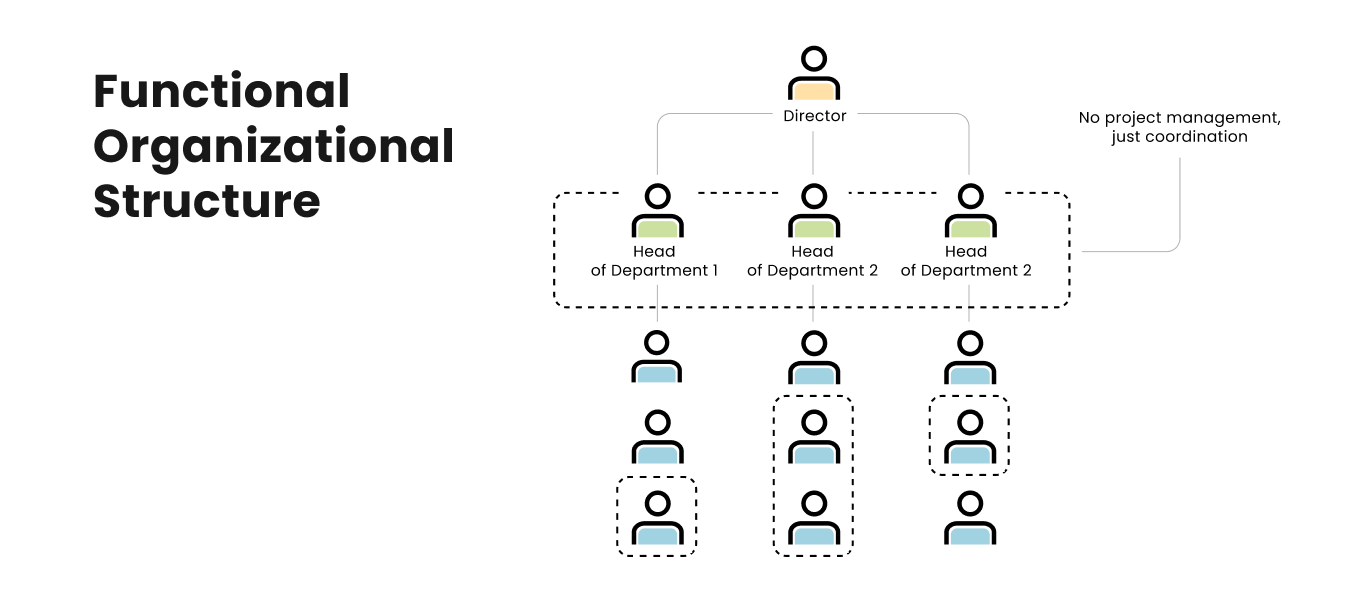 Classic examples of the functional structure include the military, manufacturing enterprises, and the government sector. There's a very rigid hierarchy that hampers horizontal communication. At the top is the director, followed by their deputies and so on, down to department heads and finally, the subordinates like engineers, marketers, etc.
Classic examples of the functional structure include the military, manufacturing enterprises, and the government sector. There's a very rigid hierarchy that hampers horizontal communication. At the top is the director, followed by their deputies and so on, down to department heads and finally, the subordinates like engineers, marketers, etc.
In functional structure, project management is extremely challenging because a project always requires horizontal coordination. If you're trying to manage a project within a functional structure without being the top executive, it's going to be tough.
As a project manager, you can't simply assign tasks to a department. First, you need to relay the task to the department head, and if they agree, they will delegate it down. Once the task is completed, it goes back up the chain. In such a structure, the role of managers is collectively performed by the department heads, and a manager doesn't have the full authority that comes with the role but is held accountable as if they did. Effectively, they act more as a project coordinator.
This setup only works partly effectively if the senior leadership is actively involved in the process, or if department heads actively work with external contractors and the biggest part of work is done on their side.
Weak Matrix Organizational Structure
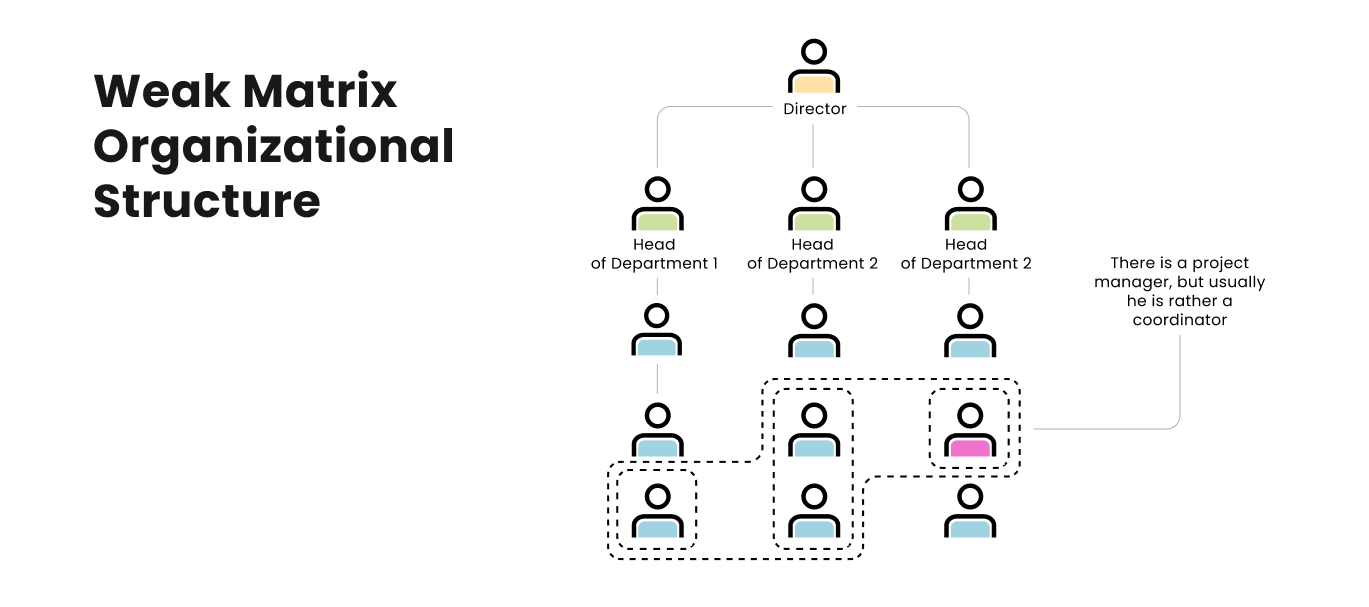 Weak matrix structure resemble the functional structure, as depicted in diagrams. But how do we distinguish a weak matrix structure from a functional one? Through relationships.
Weak matrix structure resemble the functional structure, as depicted in diagrams. But how do we distinguish a weak matrix structure from a functional one? Through relationships.
In a weak matrix structure, horizontal communications are slightly facilitated. If you approach employees from another department, you're not immediately turned away but listened to. Nevertheless, the manager still can't directly assign tasks or adjust plans without department heads.
If a company with a weak matrix structure initiates a project, the project manager often emerges from among the performers, such as a developer in an IT department project.
Plans are discussed with department heads, and employees might be told they can dedicate part-time to the project. However, all plans must be approved by department heads, and the project manager lacks the authority to make unilateral adjustments, leading to dual reporting lines for employees, to both their department head and the project manager.
This structure is often found in manufacturing environments, especially when a plant decides to implement new capacities on a regular basis. The need exists, but since project management was previously absent and there's hesitation to grant extensive authority, the manager is usually selected from among the staff and very limited in what they can do.
Balanced Organizational Matrix
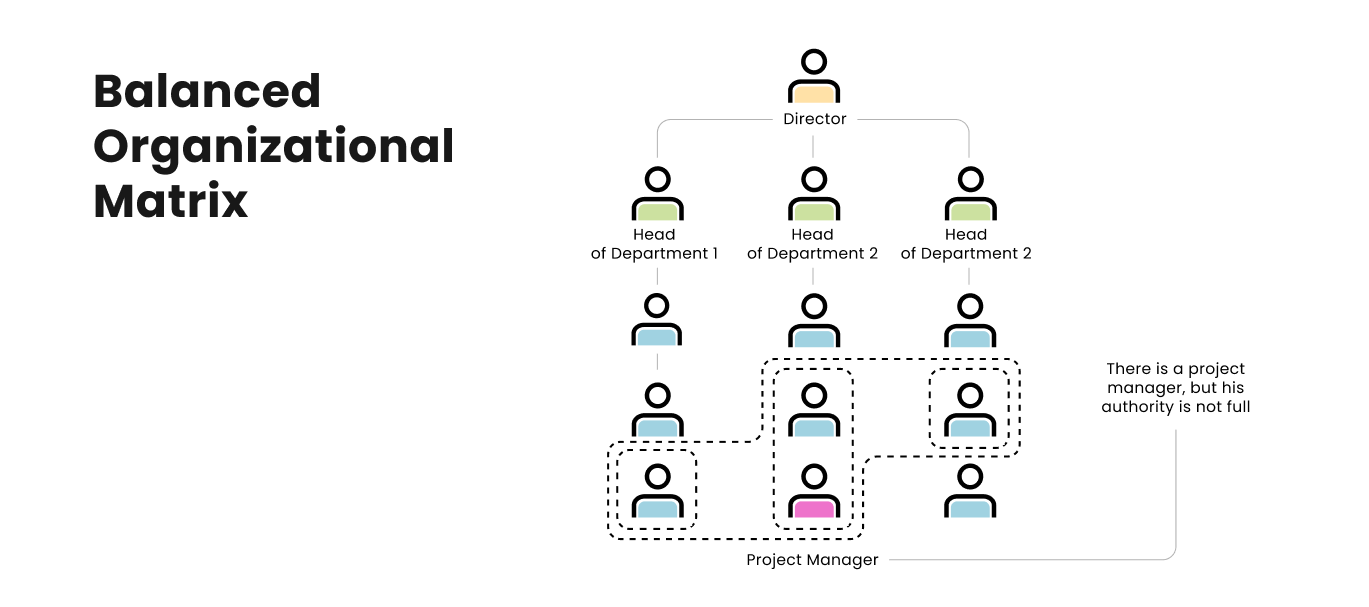 This structure is more conducive to project management, common in many companies, especially in IT, where either a balanced or strong matrix structure is prevalent.
This structure is more conducive to project management, common in many companies, especially in IT, where either a balanced or strong matrix structure is prevalent.
Here, there's a real project manager with both the responsibility and authority of a manager. In a balanced matrix, the relationship between employees is characterized by a legitimate dual reporting system. People clearly understand they have two supervisors: their department head and the project manager, and they listen to both.
The project manager can influence many aspects: task priorities for employees, and even have a say in hiring or firing decisions. These two roles complement each other, with the department head focusing on employee development and technology, and the project manager on meeting deadlines and other project expectations. There's a constructive dialogue between them, and decisions are made collaboratively.
Strong Matrix Organizational Structure
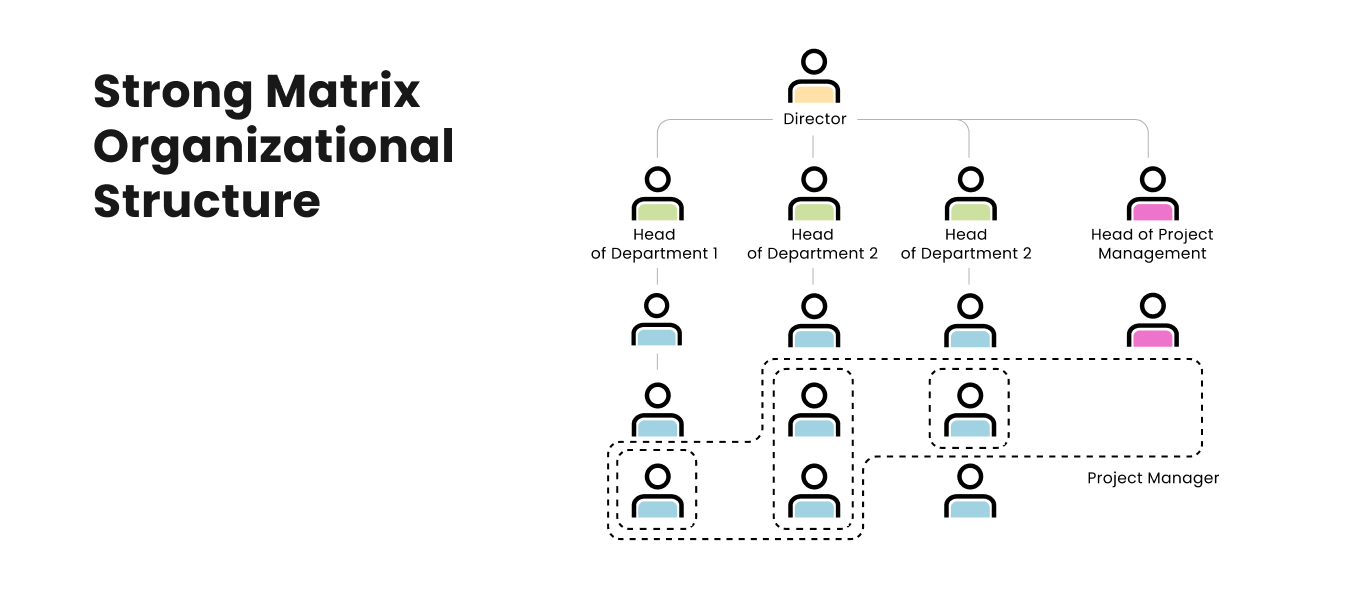 What sets the strong matrix apart from the balanced matrix is, again, the relationship dynamics. Here, the project manager's authority is much more pronounced. They decisively handle hiring and firing within the team and the company, assign tasks and priorities, and there's a separate department of project managers with their own head. The main difference is the existence of a professional dedicated solely to project management, with no other project-related responsibilities.
What sets the strong matrix apart from the balanced matrix is, again, the relationship dynamics. Here, the project manager's authority is much more pronounced. They decisively handle hiring and firing within the team and the company, assign tasks and priorities, and there's a separate department of project managers with their own head. The main difference is the existence of a professional dedicated solely to project management, with no other project-related responsibilities.
Project (Flat) Organizational Structure
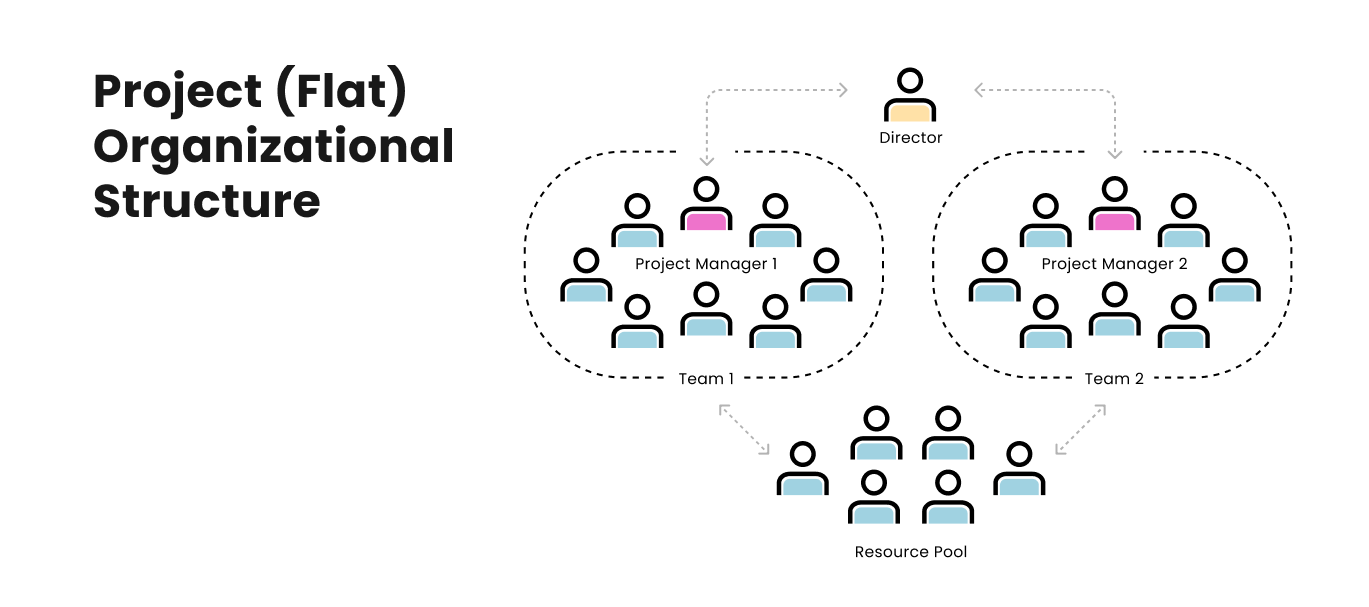 Project or flat organizational structure is distinctively different from the others. There are no departments, just a resource pool, and a project manager. When a project is launched, the project manager takes people from this pool to make a team and leads them to execute the project. Those left in the pool have no work until they're selected for a project, a common setup for large outsourcing companies.
Project or flat organizational structure is distinctively different from the others. There are no departments, just a resource pool, and a project manager. When a project is launched, the project manager takes people from this pool to make a team and leads them to execute the project. Those left in the pool have no work until they're selected for a project, a common setup for large outsourcing companies.
The key feature here is the absolute authority of the project manager. They don't consult with anyone else and are responsible for hiring and firing. The downside is the absence of department heads, meaning the team loses a home base, as department heads usually care for employee development and skills assessment. In some companies, a resource manager might partially fulfill this role.
Conclusion
The strong matrix organizational structure offers unparalleled benefits for modern project management by granting project managers significant authority and resources. What is a matrix organization and how it functions is critical to understanding these advantages, as it defines the way authority is shared between project and functional managers. This structure facilitates swift decision-making, enhances cross-functional communication, and ensures projects are aligned with strategic objectives.
By balancing authority with collaboration, the strong matrix structure emerges as a strategic choice for achieving superior project outcomes and driving organizational success, making it an indispensable model in the realm of project management.


